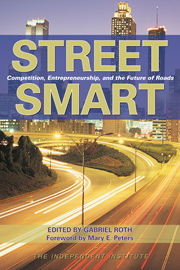With world crude oil prices hovering near $100 per barrel and prices at the gas pump exceeding $3 per gallon in most parts of the country, all the ingredients would seem to be in place for dramatic changes in our daily commuting patterns, with millions of Americans shifting from private cars to public transit.
That’s how markets are supposed to work: Higher prices encourage consumers to seek less-costly alternatives, substituting margarine for butter, Hondas for Cadillacs, a cup of McDonald’s coffee for Starbucks.
Reducing automobile use and encouraging public transportation is said to have other benefits as well: less traffic congestion; less air pollution and a more-satisfied work force, as fewer people start the day frustrated or angry from the morning commute.
Even before oil prices reached their current record levels, many were suggesting that the government push consumer costs higher by raising gasoline taxes. The assumption is that higher prices would result in use of less gasoline: the basic law of supply and demand.
However, the American people—known for their fierce independence as well as their common-sense frugality—don’t always act the way academic theorists and computer models (even free-market computer models) say they should act.
Indeed, the dramatic rise in gasoline prices over the last several years seems to have had almost no impact at all on the driving habits of most Americans.
The National Automobile Dealers Association, for example, reports that sales of larger vehicles are still robust. In 2006, the last year for which final numbers are available, nearly a million more Americans purchased light trucks than purchased automobiles—the sixth year in a row in which truck sales exceeded car sales.
Inflation-adjusted gasoline prices more than doubled in the 1995-2005 period (the latest for which both fuel and travel data are available). Theoretically, an increase this large should have driven many Americans to alternate modes of transportation. Instead, auto travel rose 23 percent, twice as fast as the 11 percent population growth in the same period.
As for the notion that rising fuel costs would inspire people to use public transportation, the data do not support this theory either. While gasoline prices were doubling, public transportation ridership—including all forms of urban public transportation, as well as intercity buses and Amtrak—increased by only 7 percent, less than the rate of population growth.
In fact, public transportation’s share of travel has actually declined in recent years, from around 7 percent of the total in 1995 to around 6 percent in 2005.
Despite the dramatic increase in gasoline and diesel fuel prices, most Americans continue to forgo public transportation.
There are several reasons for this, some of which are discussed in a recent book, Street Smart: Competition, Entrepreneurship and the Future of Roads, published by Transaction Publishers and the Independent Institute. The most obvious is the fact that Americans like the freedom to come and go as they please, on their own schedules, not somebody else’s.
Americans also value their time. Public transportation is slow compared to automobile travel, with the typical trip taking twice as long as driving a car. The amount of time available in any given day is fixed, so those who can afford to do so put a premium on conserving this valuable resource.
As suggested in another recent book, Trading Up, by Michael J. Silverstein of the Boston Consulting Group, there’s a third reason higher gasoline prices are not driving people away from personal automobiles: Many Americans—even those with limited budgets—consciously choose to spend more on certain things, while perhaps cutting back in other areas. Thus, they are willing to pay extra for the convenience and time savings associated with the personal auto.
The hope that rising gasoline prices or increased gasoline taxes will substantially reduce automobile travel by inducing people to choose public transportation is unrealistic.
Far from being disdained and disparaged as an “energy waster,” the automobile should be hailed for its ability to save our most precious resource: time.








